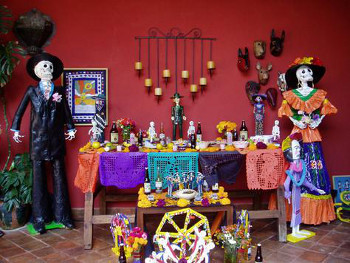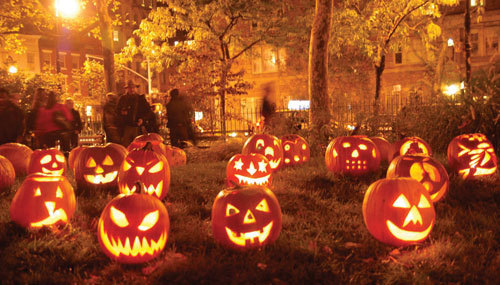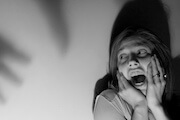When you think about Halloween what are the first images to come into your mind? Most of us associate this spooky holiday with trick or treating, pumpkins as lanterns and all sorts of costumes, especially those of the ghostly variety.
But most of the things we know about Halloween are pretty new traditions. To find the origins of Halloween we have to go back much further and cross several seas to a country called Ireland.
History
The early Irish people were Celtic tribes who practiced paganism, an early type of religion. The Irish Celts celebrated two important festivals, one honoring the arrival of spring (think maypoles) and the other celebrating the end of the harvest and arrival of winter on November 1.
 October 31st was dangerous for the living according to Ancient Celts
October 31st was dangerous for the living according to Ancient Celts
The ancient Celtic tribes believed that the dividing line between the living and the dead became dangerous for the living on October 31 when the weather turned cold, leading to sickness and damage to crops. So they tried to ward off what they thought were evil spirits by lighting bonfires where the bones of livestock were thrown. Just like modern Halloween, the Celts wore masks and costumes to confuse the evil spirits and make them think they were one of them. We can start seeing the beginnings of modern-day Halloween here.
All Saint's Day
Meanwhile, more and more people were becoming Christians, and celebrating a festival called All Saint’s Day, also known as All Hallows or Hallowmass (“Hallow” means “Holy”) that took place on May 13. The day before All Hallows was called All Hallows Even, which, shortened, becomes Hallowe'en (and, eventually, is spelled Halloween like today).
The day after All Saint's Day is All Soul's Day and commemorates those who have died but haven’t yet gone to Heaven. In many parts of the world, especially South America and other Catholic countries this day is also known as the Day of the Dead.
 Day of the Dead altar
Day of the Dead altar
In the ninth century a guy named Pope Gregory IV moved All Saint's Day from May 13 to November 1 – the same day as that old Pagan festival we talked about before. Gradually, many of the Pagan traditions started to be incorporated into the Christian holiday, especially the stuff about warding off evil spirits with costumes and masks.
 Carving Jack-o-Lanterns wasn't a Halloween tradition til the 1900s
Carving Jack-o-Lanterns wasn't a Halloween tradition til the 1900s
The first time we hear about a more modern-day Halloween, with costumes and trick-or-treating and carving pumpkins, is the early 1900s. In Canada, in a town called Kingston, the local paper reported in 1911 that it was normal for younger kids to go into the streets on Halloween between 6 and 7 p.m., visiting shops and neighbors and asking for nuts and candies in exchange for rhymes and songs.
Have Your Say
What is your fave part of Halloween? Let us know!

































